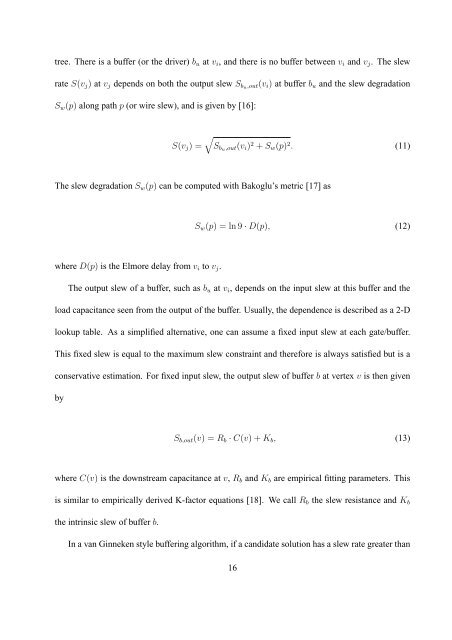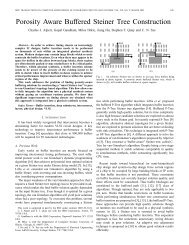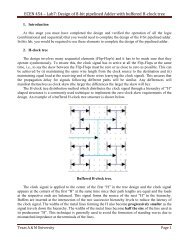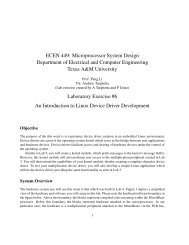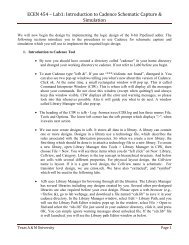Buffer Insertion Basics - Computer Engineering & Systems Group ...
Buffer Insertion Basics - Computer Engineering & Systems Group ...
Buffer Insertion Basics - Computer Engineering & Systems Group ...
Create successful ePaper yourself
Turn your PDF publications into a flip-book with our unique Google optimized e-Paper software.
tree. There is a buffer (or the driver) b u at v i , and there is no buffer between v i and v j . The slew<br />
rate S(v j ) at v j depends on both the output slew S bu,out(v i ) at buffer b u and the slew degradation<br />
S w (p) along path p (or wire slew), and is given by [16]:<br />
S(v j ) =<br />
√<br />
S bu,out(v i ) 2 + S w (p) 2 . (11)<br />
The slew degradation S w (p) can be computed with Bakoglu’s metric [17] as<br />
S w (p) = ln 9 · D(p), (12)<br />
where D(p) is the Elmore delay from v i to v j .<br />
The output slew of a buffer, such as b u at v i , depends on the input slew at this buffer and the<br />
load capacitance seen from the output of the buffer. Usually, the dependence is described as a 2-D<br />
lookup table. As a simplified alternative, one can assume a fixed input slew at each gate/buffer.<br />
This fixed slew is equal to the maximum slew constraint and therefore is always satisfied but is a<br />
conservative estimation. For fixed input slew, the output slew of buffer b at vertex v is then given<br />
by<br />
S b,out (v) = R b · C(v) + K b , (13)<br />
where C(v) is the downstream capacitance at v, R b and K b are empirical fitting parameters. This<br />
is similar to empirically derived K-factor equations [18]. We call R b the slew resistance and K b<br />
the intrinsic slew of buffer b.<br />
In a van Ginneken style buffering algorithm, if a candidate solution has a slew rate greater than<br />
16


